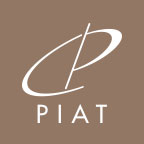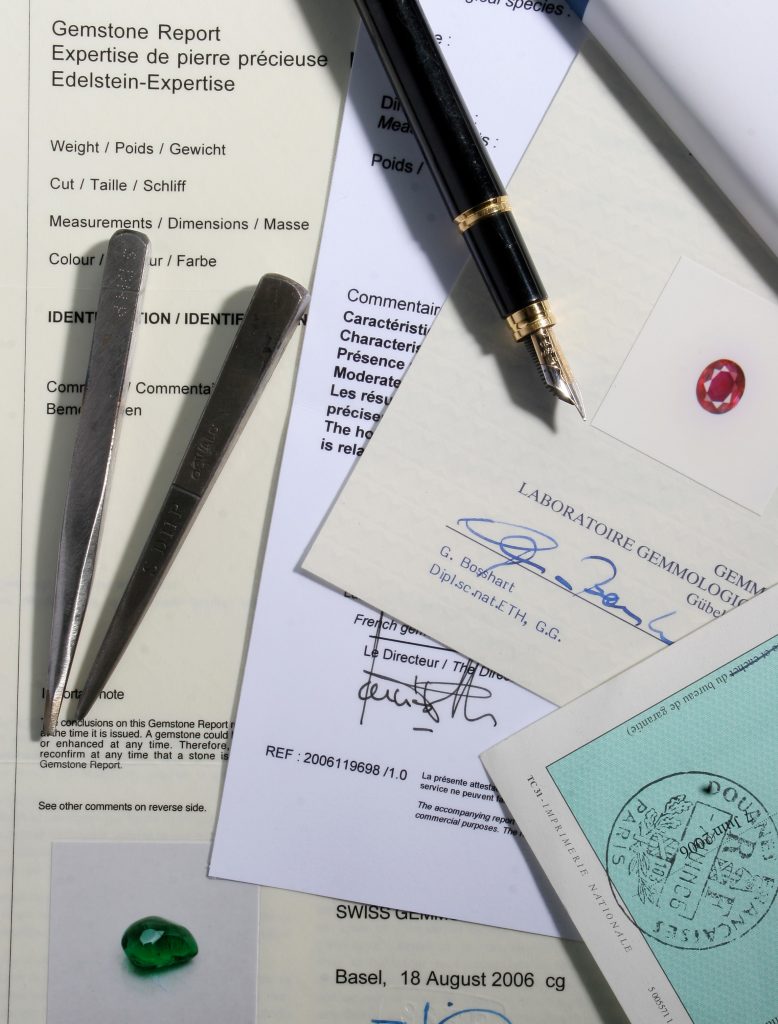While the expression appears clear and explicit, it can also contain contradictions. This happens when a laboratory certifies the origin of a gemstone whilst writing in miniscule letters at the bottom of the page, that its certification on the origin of the gemstone is neither a guarantee, nor a validation of the origin! For instance: “This report is not a guarantee, valuation or appraisal and contains only the characteristics of the article described herein after it has been graded, tested, examined and analysed by the laboratory providing this report […] Inscriptions reported in this document are not a guarantee, validation or warranty of an article’s quality, country of origin or source”
Other laboratories tend to provide formal limitations of their liability: “And unless expressly agreed otherwise, XXX Lab cannot be held responsible for any consequences resulting from incomplete or erroneous data on this report such as errors in dimension and weight measurements, typing errors and errors in the determination of the authenticity, country of origin and errors in the declaration of treatments”.
Such statements are to some extent a contradiction in terms and raise two questions, one on the legal matter, and one on the commercial consequences:
- Are the terms found in laboratory certificates equivalent to a limitation of liability clause and can they be considered as valid (due process clause) and opposable?
- Can, and how would, the seller protect himself in the event that a client demands the cancellation of the sale under the claim that the same laboratory or another laboratory gives a contradicting opinion on the origin of the stone or concerning the absence of treatment of the stone?
To answer the first question, we asked two legal experts and both concurred in their answers: “Contracts between professionals that do not express limitation of liability clauses in clear and apparent characters are contradictory to French law from a general standpoint. It would appear that such statements in miniscule script as seen in the previously mentioned examples constitute such cases.
Fundamentally, the case law is adamant on the fact that a clause will be judged null and void when it clears the liability of one of the contractors, who failed to deliver on the contract’s “essential duties”. In such a case, the exclusion clause or the limitation of guarantee clause will be deemed unwritten”.
The contract between a seller paying a laboratory so that it may examine and certify a gemstone creates mutual duties, some of which are of an “essential” nature (the core of the contract’s purpose). In regards to the laboratory, the “essential duties” consist in determining a gemstone’s nature, its potential treatments or its origin. As a consequence, the laboratory is rendered liable when establishing a report.
Let us imagine that a first laboratory delivers to a seller a certification according to which the gemstone is considered as having not been treated. In the case where after the sale, other opinions are given that contradict this first affirmation, there should be no doubt that in front of a tribunal, the laboratory’s liability may be engaged and the element of fault potentially established.
The seller could then ask for reparation of the prejudice in direct link to the laboratory’s fault in appreciation. Such a prejudice could result in compensation on the basis of a damage to the seller’s reputation, the costs to which the seller was exposed, and even the loss of profit that could result from the cancellation of the sale.
How can we protect ourselves from such situations? First of all, by limiting our own liability. Maison Piat does so by writing on each of its invoices the following paragraph: “All future contestation on the basis of the results analysed/certified by the notified laboratories on the invoice are deemed accepted at the moment of sale. The reports express the expert opinion of a laboratory at a given time and does not express any further guarantee”.
Such a statement fulfils a similar objective to that of the legal terms expressed in a laboratory’s report. The difference being that the invoice notifies the intervention of a third party expertise to examine the gemstone.
This situation creates a paradox. On the one hand, from a legal perspective, laboratories are not unassailable, and can be held liable for their faults. On the other hand, from a commercial standpoint, the position of the seller and his close cooperation both with laboratories and jewellers, obliges him to consider – as one of the interviewed experts recalled humorously – that: “The seller must not upset anyone”. In that sense, the seller has the responsibility of always favouring diplomacy rather than legal adjudication.
This situation illustrates the dangers for the profession: in the short term, the clients’ wariness, and in the long term, a potential decrease in sales.

